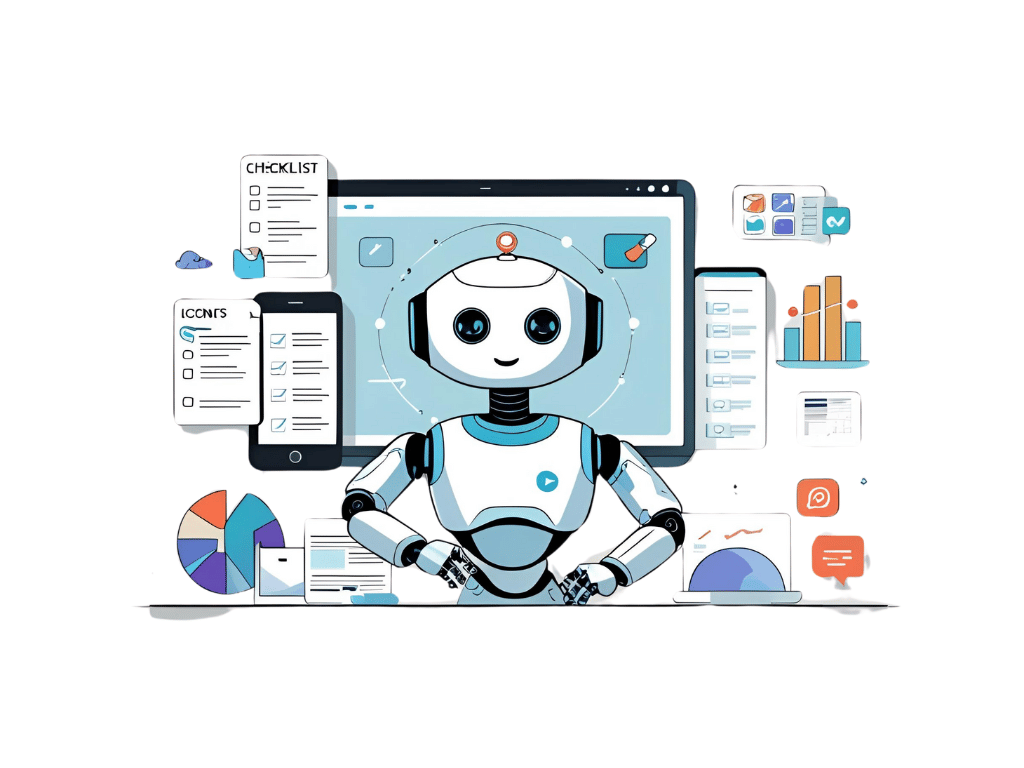- 9 min read

You ever spend half a day chasing down a packaging defect no one caught? Or wondering why your shelves are half empty even though your system says otherwise?
If so—you’re not alone. And no, you're not cursed. You're just still relying on humans to do things your systems could handle better, faster, and passively in the background.
That’s where computer vision comes in.
And before you close the tab because “AI isn’t for us”—hang tight. This isn’t about robots replacing people. It’s about putting an always-on, super observant visual assistant in places where humans either miss stuff, get tired, or just aren’t fast enough.
Let’s clear the hype and break down exactly what computer vision can do for your business—real tools for real workflows.
Computer vision is a type of AI that lets machines interpret visual information—images, video, everything from X-rays to drone footage. Then it does something with that info. Detects defects. Flags damage. Recognizes faces. Tracks movement. Picks strawberries. Sounds wild, but it’s not the future—it’s happening now.
By 2025, the global computer vision market is expected to hit $27.02 billion. And it’s growing fast—up to $82.1 billion before 2033 if the trendsticks. That’s not hype—that’s every industry quietly saying, "yep, we need help seeing stuff and making decisions faster."
Let’s start on the factory floor. Manual inspection is a freaking slog—slow, error-prone, and expensive. Computer vision flips the table on that.
Smart cameras + AI watch the line in real-time and flag defects instantly—with over 98.5% accuracy. That means fewer missed cracks, misaligned labels, or botched coatings. It’s used in:
Why it matters: This tech can reduce defect rates by up to 60% and increase production throughput fivefold. That’s not incremental—that’s game-changing for lean ops teams.
If you’ve ever had inventory vanish off the shelves but stay “in stock” in your system, congrats—you’d benefit big from vision-powered inventory tracking.
Computer vision in retail helps with:
For scrappy retailers running omnichannel—website, Amazon, Shopify, TikTok—it’s a huge stress relief to blend those moving parts with smarter visual data.
Healthcare pros are heroes—also? Overloaded. Computer vision helps give them breathing room without compromising care.
It assists with:
Bottom line: Fewer missed diagnoses, faster treatment, happier doctors—and patients who don’t fall through the cracks.
You've got a warehouse packed to the gills and 243 orders queued by lunchtime. Missed scan? Delayed delivery? Damaged package? It adds up fast.
Computer vision steps in to:
Bonus: It helps you stay compliant with safety protocols. One glance at a hardhat? Triggers an alert if someone on the floor is out of compliance.
Yes, even farms are going high-tech. Computer vision is helping farmers optimize irrigation, detect crop diseases early, and kickstart better yields—often using satellite or drone footage.
The result? Bigger yields with less waste. For any business tied to supply chains, food distribution, or environmental sustainability—it’s like finally getting eyesight where you've been flying blind.
Here’s the kicker—computer vision doesn’t just “look cool.” It delivers hard numbers:
Short answer: Yup. It used to be Fortune 500 playground stuff. But now—thanks to cloud platforms, cheaper sensors, and foundation models that don’t need a terabyte of data—you can plug simpler computer vision tools right into your workflows.
You do not need:
You do need someone who knows how to weave computer vision into your existing systems—so it saves time instead of adding work.
That’s what we build at Timebender. Semi-custom automations that plug into your ops, sales, or production stack—without flipping your entire damn infrastructure upside down.
It’s not magic. It’s systems, strategy, and solving for the bottlenecks that kill your time.
Here’s what’s rolling out fast in the next 12–24 months:
TL;DR – this tech is getting faster, cheaper, and more capable. Right in time for your ops systems to stop limping along.
If you’re tired of juggling inspections manually, missing stuff that should’ve been obvious, or letting slip-ups kill your margins—computer vision might be the eyes you didn’t know your business needed.
You don’t need to become an AI engineer. You’ve just got to start with one problem. One bottleneck. One process that eats your time, budget, or morale—and then automate the hell out of visual monitoring around it.
This is what we build at Timebender.
Semi-custom automation systems for lean teams—plugged into your ops, your marketing, or your sales workflows. Built to actually fit your business—not somebody else's SaaS demo.
Book a free Workflow Optimization Session and let’s map how computer vision (and other AI workflows) could finally save your team some damn time.
River Braun, founder of Timebender, is an AI consultant and systems strategist with over a decade of experience helping service-based businesses streamline operations, automate marketing, and scale sustainably. With a background in business law and digital marketing, River blends strategic insight with practical tools—empowering small teams and solopreneurs to reclaim their time and grow without burnout.
Schedule a Timebender Workflow Audit today and get a custom roadmap to run leaner, grow faster, and finally get your weekends back.
book your Workflow optimization session